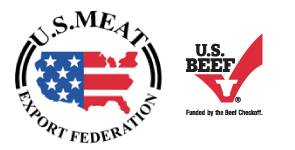After having seen the best cuts to smoke at home, now we take another step to see how to cure meat at home and to get the most out of it. To get the best results it is important to understand what maturation is and what happens to the meat during this process.
When we talk about curing meat, we refer to a period in which a certain cut, be it a rib or a steak, undergoes natural modifications during maturation. The chemical-physical processes cause the qualities of the meat to be modified, mainly the consistency and flavor. In short, there is a reduction in the moisture of the meat and an oxidation of proteins and fats.
Therefore, it is essential to find the optimal temperature to carry out the process of curing the meat to perfection. Generally, the temperature must be kept constant between 0º and 4º; it is important to prevent the proliferation of microorganisms harmful to our health.
Curing Meat in the Fridge
It is essential to cure meat only at extremely controlled temperatures, such as those in the refrigerator. Butchers often have special chambers, but at home for now we only have refrigerators, and it is the best way to practice this technique.
There are those who put the meat on a rack and put it in the fridge, and others who put a mesh or oven paper to avoid contamination in the fridge, liquid spills or the exchange of odors.
Vacuum Meat Curing
It is said to be one of the most popular ways of curing meat by retailers, but great results can also be obtained in our own homes. The main problem is that the curing process must produce changes that are incompatible with the absence of oxygen and the inability to lose fluids. So, you could say that the vacuum packed cure is not so much a cure, but a kind of marinade in a vacuum, in its own juices.
Curing Meat by Salting
When we carry out the salting process, it is important to use two types of salt, fine salt and coarse salt. They have to be mixed because only fine salt has been shown to form crusts, leaving empty spaces where bacteria can penetrate.
In the brine method the two are also mixed, because the fine salt dissolves faster and curing begins earlier.
The salt must be marine or rock, but we should never use table salt, which contains certain chemicals to make it fine, loose and without moisture.
We can find several types of usable salt, each with its pros and cons:
Coarse salt
Rock salt
Dairy salt
Common kitchen salt
Seasoning
Seasoning is not necessary for the curing process itself, salt will suffice. Seasonings can be added to affect flavor. For this, spices are usually used because the salt tends to dry out and harden the meat. To make the meat juicy, sugar and molasses are used.
Seasonings for the Brine
Any seasoning, liquid or dry, can be used, whichever matches the flavor of the chosen meat. There are also other ingredients that contribute to preservation, such as vinegar, wine, spirits, beer or pepper.
Seasonings for Salting
No liquid seasoning can be used in dry salting. To sweeten and tenderize the meat, we can use sugar, instead of molasses, although it does not give the same color. The ground herbs and spices are used in the dry salting to rub the meat together with the salt and sugar, allowing it to absorb the aroma. Any type of herb or spice can be used that is absolutely dry and complements the flavor of the meat.
In any case, each meat is different, and it depends a lot on the cut, so to find the perfect technique it is essential that you consult your trusted butcher, to guide you in the method and timing.
